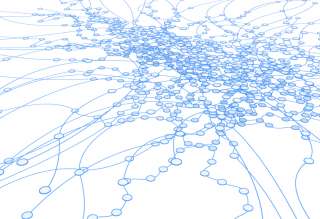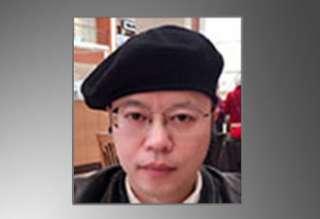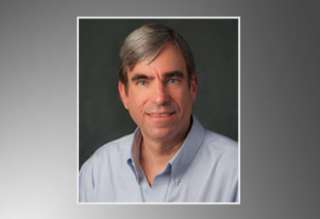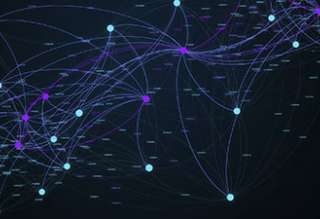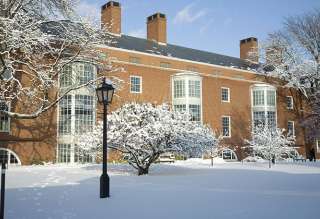SPS Feed
Top Reasons to Join SPS Today!
1. IEEE Signal Processing Magazine
2. Signal Processing Digital Library*
3. Inside Signal Processing Newsletter
4. SPS Resource Center
5. Career advancement & recognition
6. Discounts on conferences and publications
7. Professional networking
8. Communities for students, young professionals, and women
9. Volunteer opportunities
10. Coming soon! PDH/CEU credits
Click here to learn more.
The Latest News, Articles, and Events in Signal Processing
Lecture Date: May 9, 2019
Chapter: Santa Clara Valley
Chapter Chair: Yang Lei
Topic: Solving the Cocktail Party Problem for Hearing Aids:
Solutions, Challenges and Opportunities
The task of Heterogeneous Face Recognition consists in matching face images that are sensed in different domains, such as sketches to photographs (visual spectra images), and thermal images to photographs or near-infrared images to photographs. In this paper, we suggest that the high-level features of Deep Convolutional Neural Networks trained in visual spectra images are potentially domain independent and can be used to encode faces sensed in different image domains.
In psychology, it is known that facial dynamics benefit the perception of identity. This paper proposes a novel deep network framework to capture identity information from facial dynamics and their relations. In the proposed method, facial dynamics occurred from a smile expression are analyzed and utilized for facial authentication. Detailed changes in the local regions of a face such as wrinkles and dimples are encoded in the facial dynamic feature representation.
In real-world applications, different kinds of learning and prediction errors are likely to incur different costs for the same system. Moreover, in practice, the cost label information is often available only for a few training samples. In a semi-supervised setting, label propagation is critical to infer the cost information for unlabeled training data.
Auction is an effective way to allocate goods or services to bidders who value them the most. The rapid growth of e-auctions facilitates online transactions but poses new and distinctive challenges. It is difficult to establish trust among sellers, buyers, and auctioneers without centralized auction websites or platforms (the auctioneer) which collect bids and derive the auction results. However, these third parties may be untrustworthy, and malicious sellers or buyers may refuse to deliver the goods or payment according to the protocol.
We present an image captioning framework that generates captions under a given topic. The topic candidates are extracted from the caption corpus. A given image’s topics are then selected from these candidates by a CNN-based multi-label classifier. The input to the caption generation model is an image-topic pair, and the output is a caption of the image.
In this paper, we propose a Group-Sparse Representation-based method with applications to Face Recognition (GSR-FR). The novel sparse representation variational model includes a non-convex sparsity-inducing penalty and a robust non-convex loss function. The penalty encourages group sparsity by using an approximation of the
Most variational formulations for structure-texture image decomposition force the structure images to have small norm in some functional spaces and to share a common notion of edges, i.e., large-gradients or large-intensity differences. However, such a definition makes it difficult to distinguish structure edges from oscillations that have fine spatial scale but high contrast. In this paper, we introduce a new model by learning deep variational priors for structure images without explicit training data. An alternating direction method of a multiplier algorithm and its modular structure are adopted to plug deep variational priors into an iterative smoothing process.
Hashing is a promising approach for compact storage and efficient retrieval of big data. Compared to the conventional hashing methods using handcrafted features, emerging deep hashing approaches employ deep neural networks to learn both feature representations and hash functions, which have been proven to be more powerful and robust in real-world applications.
The IEEE Signal Processing Society congratulates the following recipients who will receive the 2018 IEEE Signal Processing Society paper awards for their paper published in the IEEE Transactions on Signal Processing. Presentation of the paper awards will take place at ICASSP 2019 in Brighton, U.K.
A task of major practical importance in network science is inferring the graph structure from noisy observations at a subset of nodes. Available methods for topology inference typically assume that the process over the network is observed at all nodes. However, application-specific constraints may prevent acquiring network-wide observations.
This paper discusses greedy methods for sensor placement in linear inverse problems. We comprehensively review the greedy methods in the sense of optimizing the mean squared error (MSE), the volume of the confidence ellipsoid, and the worst-case error variance. We show that the greedy method of optimizing an MSE related cost function can find a near-optimal solution.
Linear canonical transforms (LCTs) are of importance in many areas of science and engineering with many applications. Therefore, a satisfactory discrete implementation is of considerable interest. Although there are methods that link the samples of the input signal to the samples of the linear canonical transformed output signal, no widely-accepted definition of the discrete LCT has been established.

The Signal Processing research group at the Universität Hamburg (http://uhh.de/inf-sp) is hiring a research associate (PhD candidate) for a project on Phase-Aware Speech Enhancement.
Lecture Date: May 19, 2019
Chapter: ChengDu
Chapter Chair: Qian He
Topic: Cyber Attacks on Internet of Things Sensor Systems for Inference
Pages
SPS Social Media
- IEEE SPS Facebook Page https://www.facebook.com/ieeeSPS
- IEEE SPS X Page https://x.com/IEEEsps
- IEEE SPS Instagram Page https://www.instagram.com/ieeesps/?hl=en
- IEEE SPS LinkedIn Page https://www.linkedin.com/company/ieeesps/
- IEEE SPS YouTube Channel https://www.youtube.com/ieeeSPS





